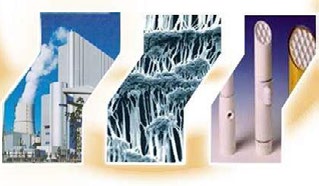A revolution in design and engineering: Nanomaterials.
##plugins.themes.bootstrap3.article.main##
Abstract
This paper is shows succinctly the emergence and development of nanomaterials, emphasizing the real possibilities of their application. The paper describes some examples of their use in different designs, energy-saving and their environmental impact. Mention has been made of some opportunities our country would have in case of expanding its participation in this field, as well as some of their threats whose consequences could be mitigated if we can know the necessary steps that have to be taken.
The designers have proposed different forms, made objects, products and systems of products based on the properties of these materials. On the other hand, engineers have also based their calculations and designs of work objects on the characteristics of the available materials. Nevertheless in the 1990s, they create paved the way so that the present civilization gives one of the major leaps in History: the design and use of nanomaterials.
They must master their scope and limitations, their advantages and dis-advantages, and their costs. Due to the extremely fast development of this new sphere of knowledge, failing to do so now will result in a short time in its obsolescence as generator of ingenious, lasting and economic solutions.
##plugins.themes.bootstrap3.article.details##

This work is licensed under a Creative Commons Attribution-NonCommercial-ShareAlike 4.0 International License.
- Attribution — You must give appropriate credit , provide a link to the license, and indicate if changes were made . You may do so in any reasonable manner, but not in any way that suggests the licensor endorses you or your use.
- NonCommercial — You may not use the material for commercial purposes .
- No additional restrictions — You may not apply legal terms or technological measures that legally restrict others from doing anything the license permits.
- ShareAlike — If you remix, transform, or build upon the material, you must distribute your contribution under the same license as the original. NOTE: This point applies to numbers 1 to 20 of the magazine with the previous CC-BY-NC-SA 4.0 license. Does not apply to the new CC BY-NC 4.0 license from Volume 11, Number. 21 (2024).
References
Armando A.C, José A. G. Calderón. M,(2016) Nano-materiales: su crecimiento, caracterización estructural y tendencias. ISBN 978-607-8164-02-8
Bras, W., Y.K. Levine (2015), “Fibres & Textil in Eas- tern Europe”, Soft Condensed Matter Experiments using synchrotron radiation, Vol. 13, No 5(53), pp. 23-26.
Begerano.P.G (2017). Diseño de dispositivos para limpiar el medio ambiente. Revista Interdisciplinaria en Nanociencia y Nanotecnología.Vol.5.No 7.
Byrne, W., T. Michele y P McNamee (2008), “Chemical functionalization of carbon nanotubes for the mechanical reinforcement of polystyrene composi- tes”, Nanotechnology 19, pp. 2013-2014.
Campell, D, Pethrick, R. A y R. A White (2015), Polymer Characterization. United States of Ameri- ca: Taylor & Francis.
Campell, R, A. Pethrick y J. R. White (2009), Po- lymer Characterizacion Physical Techniques. United States of America: Taylor&Francis.
Coleman, J., K.Umar, J. Werner J. Yurii K. Gunko (2016), “Small but strong: A review of the mechanical properties of carbon nanotube–polymer compo- sites”, Carbon 44, pp. 1624–1652.
Delgado, G. D. (2010),“Economics and governance of nanomaterials: potential and risks”, Technology in Society 32, pp.137-144.
Dennis, H. R, et al., (2001), “Effect of melt proces- sing conditions on the extent of exfoliation in organo- claybased nanocomposites”, Polymer, 2001, Vol. 42.
Eun–Hee Park Cirlin. (2014).“Overview of the Cu- rrent status of Nanotechnology, Nanomaterials and their Applications”. International Technology Associates. Los Angeles, California UKC
Grobert,R (2015).Nonocince y Nanotecnología, Royal Society y Royal Academiy of Inginieerinig, Grupo de Trabajo integrado entre otros por: Prof. Ann Dowling CBE FREng FRS -Presidente , Prof. Clift OBE FREng,.
Haberzett, A. (2015).Nanomedicine: Destination or Jorney. C.Nanotechnologia P9-R13.
Hans. D., P. Elsner, P. Eyerer y T. Hirth (2005), Kunststoffe Eigenschaften und Anwendungen, Berlin: Springer. Frederik C. Krebs (2009), “Fabrication and processing of polymer solar cells: A review of printing and coating techniques”, Solar Energy Materials & Solar Cells 93, pp. 394–412.
Kwok, K, K. Wilson K y S. Chiu (2005), “Growth of carbon nanotubes by openair laser-induced chemical vapor deposition”, Carbon 43, pp. 437–446.
Kanai.S.(2016). Simulación de nanomateriales para la conversión de energía solar. Revista Interdisciplinaria de Nanociencia y Nanotecnología. Vol.2.No2.
Lakshmi S. Nair, Cato T. Laurencin (2007), “Biodegradable polymers as biomaterials”, Prog. Polym. Sci. 32, pp. 762–798.
Peralta.V, Zhao, M.L. Lopez. M., G. de la Rosa, J. Hong, J. L. Gardea-Torresdey (2015), “Nanomaterials and the environment: A review for the biennium 2014– 2015”, Journal of Hazardous Materials 186, pp. 1–15.
Pinault, M., M. Mayne-LHm ermite, C. Rey- naud, V. Pichot, P. Launois, D. Ballutaud (2005), “Growth of multiwalled carbon nanotubes during the initial stages of aerosol-assisted CCVD”, Carbon 43, pp. 2968–2976.
Sebastian, P.J. (2015), “Cancun 2015: The role of nanomaterials in solar energy conversión”, Solar Energy Materials & Solar Cells 81, pp. 291–292. ISBN 978-607-8164-02-8
Sebastian, P.J. (2013), “Nanomaterials for solar energy conversión”, Solar Energy Materials & Solar Cells 70, pp. 243–244.
Sánchez R. y, María del C. (2015). Evaluación de los impactos ambientales derivados de nanomateriales aplicados al envase y embalaje. Departamento de Proyectos de Ingeniería. Tesis Doctoral. Universidad de Valencia.
Sandra L. S, Jazmín R. A, Jorge F. M, Lídice S. P(2014). Protegiendo fármacos con nanomateriales inteligentes. Informe Científico. Universidad Autónoma de Méjico.
Serena P.(2016). Los nanomateriales y una revolución científica que avanza en la vida cotidiana. Re- vista Interdisciplinaria de Nanociencia y Nanotecnología. Vol.2.No2.
Ortiz.O.(2012). V Congreso de mecánica y Arquitectura. ISPJAE. Palacio de las Convenciones.






















